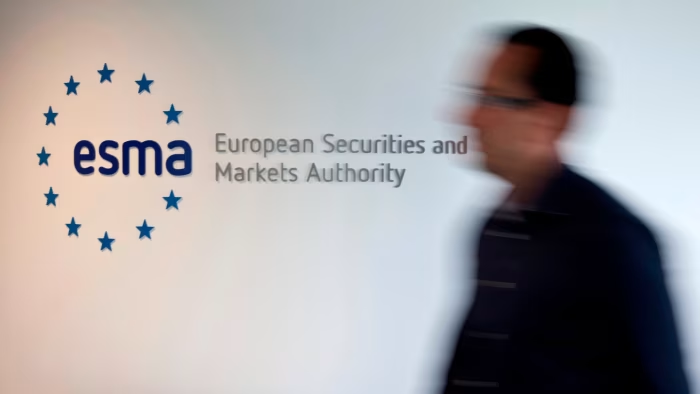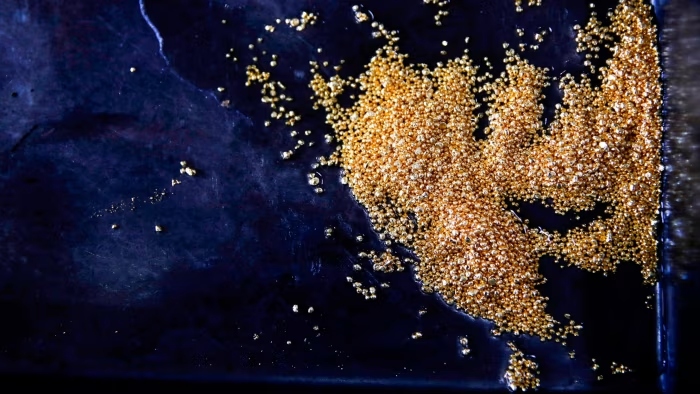The Full Moon is just around the corner, so there’s plenty of things to spot on the surface, with or without visual aids.
What is today’s moon phase?
As of Sunday, Nov. 2, the moon phase is Waxing…

The Full Moon is just around the corner, so there’s plenty of things to spot on the surface, with or without visual aids.
As of Sunday, Nov. 2, the moon phase is Waxing…

Unlock the Editor’s Digest for free
Roula Khalaf, Editor of the FT, selects her favourite stories in this weekly newsletter.
The European Commission is drawing up plans to expand central supervision over key financial markets infrastructure, including stock exchanges, crypto exchanges and clearing houses, in an effort to eliminate fragmentation in one of the single market’s core areas.
The move is part of a broader effort to bolster the EU competitiveness in relation to the US by ensuring that companies can access funding and scale up on the continent rather than across the Atlantic. The current landscape, with dozens of national and regional regulators and hundreds of trading and post-trading institutions, raises the costs for cross-border trades, a significant obstacle for start-ups to scale up in Europe.
A single supervisor modelled after the Securities and Exchange Commission in the US is seen as a significant step to completing the EU’s “capital markets union”. The move is backed by ECB President Christine Lagarde and her predecessor Mario Draghi, who mentioned this in a report he drafted last year on improving Europe’s competitiveness.
The commission has said it will put forward proposals in December for a “markets integration package”.
The most contentious idea is to expand the powers of the existing European Securities and Markets Authority (Esma) to also cover “the most significant cross-border entities”, including stock exchanges, crypto assets service providers, and post-trading infrastructure such as central clearing counterparties and central securities depositories, according to people briefed on the matter.
The commission will also call for Esma to have the last say on disputes between large asset managers. While not directly in charge of supervision, Esma would issue binding decisions in case of disputes between national supervisory authorities, the people said.
Central supervision has long been opposed by Berlin, but the government led by Chancellor Friedrich Merz has recently signalled openness and is exploring options together with France, a strong backer of the capital markets union. The Financial Times previously reported that the asset management industry was among the areas where the German government could envisage Esma supervision, but not crypto exchanges.
Other capitals, notably Luxembourg and Dublin, are still balking at the idea of handing over oversight powers to the Paris-based authority. They argue that the move could disadvantage their national financial sector, as they remain sceptical that EU regulators would act in the best interests of smaller nations.
“We would like to have [supervisory] convergence rather than creating a costly and ineffective centralised model,” said Gilles Roth, Luxembourg’s finance minister.
One European exchange group said it saw little benefit in shifting oversight of crypto assets service providers to Esma, citing a good working relationship with its national supervisor, and expressing concerns about higher compliance costs and potential Esma over-reach.
“Expanding Esma’s supervisory responsibilities would mean higher fees paid by the industry,” said Marin Capelle, policy adviser at Efama, the fund industry lobby.
The commission said it was “still exploring the potential of EU level supervision in relation to some critical infrastructures, such as central counterparties, central securities depositories and trading venues, as well as in relation to big cross-border entities such as asset managers”.
“We are considering different models for single supervision . . . from the perspective of balancing the EU interest with local expertise,” it added.
Additional reporting by Florian Müller in Frankfurt

Stay informed with free updates
Simply sign up to the Mining myFT Digest — delivered directly to your inbox.
Gold’s recent rally has boosted the prospects of cyanide producers as they increase production to meet rising demand for chemicals to process the metal.
Two of the largest suppliers of sodium cyanide, which is used to leach gold specks from crushed rock, said they had rapidly expanded production on the back of rising gold prices and increased mining activity.
Orica, which acquired US rival Cyanco for $640mn last year, plans to accelerate production as North American operators look to restart mothballed gold mines, said Andrew Stewart, head of Orica’s speciality chemicals division.
“We’re enjoying the volatility coming out of the White House,” he said, referring to the trade uncertainty from US President Donald Trump’s tariffs, which has driven much of gold’s record run.
Australian Gold Reagents, another sodium cyanide producer, this year applied to the state government to boost production capacity at its Western Australia facility to 210,000 tonnes a year in the future.
The company, which supplies miners in Africa, Australia, South America and south-east Asia, has already started to raise capacity by 30 per cent to 130,000 tonnes this year.
“Within chemicals, [the sodium cyanide plant] is one of our strongest return on capital investments and will continue to be so,” said Aaron Hood, managing director of Wesfarmers’ chemicals, energy and fertiliser division, which owns AGR.
The price of gold has risen 15 per cent in the past two months and hit an all-time high of $4,381.52 a troy ounce last week before settling at about $4,000 this week.
The sharp rally, partly driven by a dash to safer assets amid geopolitical uncertainty, comes as the mining sector undergoes consolidation and has spurred more mining activity.
Gold groups Newcrest, Northern Star and Gold Fields have acquired smaller rivals in the past two years, while smaller miners have begun to look at gold deposits previously deemed unviable.
Ramoun Lazar, an analyst with Jefferies, said the rally “incentivises gold exploration and, in turn, increases the demand for . . . sodium cyanide given ore bodies become deeper and harder to mine”.
Orica’s history dates to the Victorian gold rush of the 1870s when it supplied explosives to miners. It later became part of UK chemicals group ICI before being spun out in the 1990s. “We started in gold and we’ve gone back there,” said Stewart.
Wesfarmers, which started as a farmers’ co-operative and owns several Australian retail chains, has invested in a wide array of minerals and chemicals, including lithium.
But the sodium cyanide business, which it has owned alongside Coogee Chemicals since 1988, has been a “quiet achiever”, said Hood. “It’s one of our largest export businesses.”
The Australian companies compete with Czech chemicals group Draslovka and Chinese rivals, which make it as a byproduct of nylon manufacturing.
A longer-term threat to cyanide producers could be less toxic alternatives, said Paul Breuer, a scientist at the government research institute CSIRO, who has led a research team to develop an alternative gold leaching product called thiosulphate.
Breuer said government regulations on cyanide use were becoming more stringent — especially around the risk of the chemical entering water supplies — but it has been a struggle to convince the conservative gold industry to switch from a chemical considered effective and robust.
Wesfarmers’ Hood said he was unconvinced that alternatives would make much of a mark given the mining industry’s cost pressures, adding: “If you’re a metallurgist, why would you take the risk?”

Apple is poised to make a formidable entrance into the foldable smartphone arena with the introduction of its inaugural foldable iPhone, anticipated to launch in September 2026.
This eagerly awaited device merges cutting-edge technology with a…

The Full Moon is just around the corner, so there’s plenty of things to spot on the surface, with or without visual aids.
As of Sunday, Nov. 2, the moon phase is Waxing…

With the advent of its new AirPods Pro 3 for 2025, there’s a strong argument to be made for their inclusion in Apple’s lineup of fitness wearables alongside the Apple Watch. That’s because, alongside the truly astonishing new Active Noise…

Plankton are the unseen drivers of life on Earth. These microscopic organisms produce a large share of the planet’s oxygen and form the base of the ocean food chain. They are also astonishingly diverse, with tens of thousands of species already…


Mohammed Al-Oweib, Director of the Planning Department at the Therapeutic Services Support and Development Agency, announced that an agreement has been reached to launch the first phase of the bone marrow transplant project, based at the National…